Best Settings For Fuji Xf1 Camera?
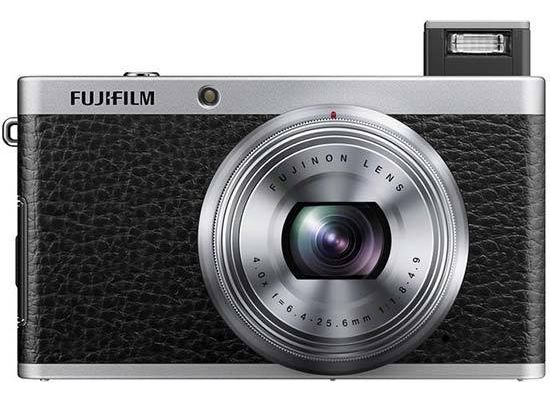
Introduction
The Fujifilm XF1 is an advanced compact camera that offers a retro pattern, 12 megapixel two/3-inch EXR CMOS sensor, a 4x, 25-100mm, f/1.8-iv.9 zoom lens with a transmission zoom band, 1080p picture recording, 7fps burst shooting and a 3-inch LCD monitor with a resolution of 460,000 dots. Other key features of the Fujifilm XF1 include an aluminium trunk, ISO range of 100-12800, full range of manual controls, Fujifilm'southward EXR shooting modes, optical prototype stabilisation, raw image capture, an integrated manual pop-up flash, film simulation modes, 360° motion panoramas, an electronic level approximate and fast processing and response times. The Fujifilm XF1 is available in blackness, scarlet and tan priced at $499.95 / £399.
Ease of Utilize
The Fujifilm XF1 is a classically styled camera with a beautiful retro design that can't fail to impress everyone that sees information technology. In an age where digital cameras are almost ubiquitous, the Fujifilm XF1 stands out by a country mile thanks to it uniquely clean styling and solid build quality, non to mention a wealth of photographer-friendly features.
The XF1 sports a 4x, 25-100mm zoom lens with a fast maximum discontinuity of f/1.eight at the 25mm broad-angle setting. This sadly quickly falls off to a much slower f/4.ix at full telephoto, merely in combination with the extensive ISO range of 100-3200 at full 12 megapixel resolution, the f/i.8 setting yet makes the XF1 well suited to low-light shooting. It allows you to manus-hold the camera in places where you lot'd usually be reaching for a tripod (if permitted) or other support, especially as the camera also features congenital-in optical image stabilisation.
As with the other 10-series models, the Fujifilm XF1 is a very well-built photographic camera, with admittedly no flex or movement in its chassis. At the aforementioned fourth dimension, information technology's really lighter than a start glance might propose, weighing in at merely 225g with the battery and memory carte fitted. Measuring 107.9(W) x 61.5(H) x 33.0(D) mm, it'due south almost pocketable simply perhaps best suited to life in a small photographic camera bag or large coat pocket. There are some plastic buttons and controls on the XF1, most notably the memory card / battery compartment door and the rear circular control bicycle and buttons, but other that that the XF1 offers excellent build quality because its price-tag.
There's no hand-grip at the forepart of the XF1 and but a small plastic pollex-rest on the rear, but your grip is helped in no small part past the textured faux-leather surface that runs around the total width of the photographic camera. A small metallic eyelet on one side of the body is used for connecting the supplied wrist strap, which isn't quite as luxurious as the rest of the package. A metal tripod mount is positioned off-centre from the lens away from the memory menu / battery compartment, so yous don't accept to remove the camera from the tripod to change either of them.
Surrounding the lens is a manual lens zooming band with vii markings including Standby, 25, 35, 50, 60, 80 and 100mm. This ring performs three functions. By default the lens is stored almost inside the trunk of the camera and locked into place. It's and then unlocked by twisting it to the left and pulling it out to the Standby setting (the lens cover is still closed at this point). The XF1 is and then powered on by a further twist of the lens band to left to the 25mm focal length setting. If it sounds complicated, in exercise it is at beginning, a fact that Fujifilm has clearly recognised by including a sticker on acme of the camera and pedagogy sheet in the box that explain how to use the XF1's lens ring.
While we applaud Fujifilm for coming up with a new idea, in the example of turning the XF1's lens ring, we're not 100% convinced that it really adds anything to the camera, other than an unnecessary layer of complexity. Firstly, the lens still protrudes slightly from the camera body when not in use, then it requires several left and right twists to turn the camera on. The Standby mode feels a little redundant, as you tin can't actually playback images or change camera settings until the lens band is set to the first focal length, and turning the camera on feels a lot slower than the 0.55 second first-upward time that Fujifilm specifies. We'd actually prefer a simple on/off button.
On the plus side the lens ring does allows you lot to quickly zoom the lens and set the focal length by turning it, with a brusque and tactile motility. It'southward a petty awkward to utilise when holding the photographic camera at arms length though, where a more conventional zoom lever would be preferable, although the focal length markings on the horizontal zoom scale that appears on the LCD screen proves helpful. All in all, though, the manual zooming ring works very well, although information technology practically begs you lot to hold the camera up to your middle, which won't go y'all very far given the absence of an optical viewfinder.
At the heart of the XF1 is a 12 megapixel 2/3-inch EXR CMOS sensor, a size that was used by several bridge-style compacts in the past but which has recently fallen out of favour. This sensor is larger than those in most compact cameras and promises to deliver better paradigm quality, although not the equal of a meaty system camera or a DSLR. Fujifilm's EXR sensor tin can be utilized in one of three means past the photographer. There's a choice between shooting at full 12 megapixel resolution in High Resolution (Hour) style, or a 6 megapixel paradigm in the Depression Racket (SN) way for shooting without flash in low light conditions, or the Dynamic Range (DR) manner to achieve an optimal remainder between shadows and highlights. The latter offers v strengths ranging from 100-1600%. If you tin can't make up one's mind which is best for a chosen scene or field of study, then just leave the camera on the scene-detecting EXR Automated Mode and permit information technology choose for itself.
We ran into some bug in brilliant sunlight when shooting in aperture and shutter priority modes, where the top shutter-speed limit of 1/2000th second at f/ane.8 frequently caused under-exposure. The XF1 doesn't characteristic a built-in Neutral Density filter, and so you lot'll accept to finish-downwards the aperture and sacrifice some depth-of-field to avert bravado out the highlights. The XF1 offers a good close focusing distance of 3cms, so macro shooting is definitely on the cards.
The Fujifilm XF1's auto-focusing speed is thankfully pretty quick , with Fujifilm quoting focus acquisition in as fiddling every bit 0.16 seconds. In practice there's a very slight delay equally information technology locks onto the subject, simply it'due south more than than fast plenty for everyday shooting, especially as it's accurate almost 100% of the time in both good and bad light. There is i pocket-size wing in the ointment though. Normal focusing is from 50cms to infinity at 25mm wide-bending, and so if yous want to get closer to your subject than that and nevertheless be able to auto-focus, yous have to remember to select the Macro way, which gets you as shut as 3cms from your discipline.
Manual focusing is activated past setting the Focus Style menu option to Transmission and using the rear thumb-wheel to set up the focus indicate, with the LCD display automatically zooming in on the subject to help y'all estimate the sharpness. Information technology takes a lot of turns to motility up and down the distance scale, not helped by the rather united nations-responsive pollex-cycle, which makes manual focusing with the X0 much more than of a chore than a pleasance.
The Fujifilm XF1 has a high-resolution 3 -inch LCD monitor on the dorsum, which has 460k dots and offers 100% scene coverage. To make the camera less obtrusive, in that location'southward a Silent menu option which turns off the speaker, flash, AF-assist lamp and most importantly the artificially-created shutter-release sound, instantly making the XF1 perfectly suited to aboveboard photography.
In terms of operational speed, the Fujifilm XF1 has some real standout highlights, but also a few weak points. Shutter lag is nearly non-existent on this photographic camera, so once yous take set the focus, you'll never miss the moment because the photographic camera tin't fire the shutter quickly enough. Continuous shooting speeds are also proficient, with a tiptop rate of 10fps, although that's only when shooting JPEGs at the vi megapixel M setting, with 7fps available for full-resolution 12 megapixel JPEG images. Annotation that if you're shooting RAW, the fastest possible charge per unit is 7fps at six megapixels, rather limiting its usefulness. Shooting a unmarried RAW + Fine JPEG takes about 6 seconds to record to the card, although thankfully you can take another shot virtually straight away. Taking a 7 frame 12 megapixel JPEG burst only took the camera a few seconds to save, during which time you can't have any more pictures.
On top of the XF1 are the tiny Fn button which by default provides quick access to the ISO speeds, but can exist customised to suit your own needs from 1 of x different settings, a modest but responsive shutter release button, a traditional shooting fashion dial which is completely recessed within the pinnacle plate, and the camera's built-in popular-upward flash, which has a range of 50cm - 7.4m at ISO 800.
The Fujifilm XF1 can tape 1080p movies at 30fps with stereo audio, turned on by pressing the one-touch records button on the back of the camera. At that place are also several slow motion options - 70fps at 640x480 pixels, 120fps at 320x240, and 200fps at 320x112. You tin can gear up the discontinuity and shutter speed before recording begins, but not during, and you can also fix the Film Simulation style, so blackness and white footage is possible.
Center or continuous auto-focusing is possible, but unfortunately yous tin't manually focus at all, which rules out some artistic effects, and confront detection tin be enabled. At that place is a HDMI port for connecting the XF1 to a high-definition TV, although as usual there's no cable supplied in the box. Also missing is a paper copy of the otherwise helpful transmission, which is supplied on CD-ROM instead, along with the consumer MyFinepix software the slow and rather unintuitive RAW convertor (essentially a specially customised version of the commercial Silkypix application).
The XF1 has a well thought-out rear command layout. All the controls are on the right of the LCD screen, with four buttons surrounding the round command wheel with the rear control dial positioned above where your right pollex naturally rests. The top two buttons are for image playback and recording movies, while the bottom two change the LCD display (or goes back) and access the new E-Fn carte du jour.
Pressing the East-Fn button effectively expands the number of external controls on the rear from 8 to 14 by assigning new functions to the top two buttons and the 4 positions on the control bike, helpfully explained past an onscreen graphic. Even better, the 6 E-Fn settings can be customised to one of 14 unlike options, which really allows yous to setup the XF1 to suit your needs.
The round control wheel tin can be used to change the shutter speed and aperture and select other settings, while around information technology are four options for setting the exposure compensation, flash mode, self-timer and focusing way. In the middle of the control cycle is the Menu/OK push button, which accesses the Shooting and Gear up-up main menus.
Image Quality
All of the sample images in this review were taken using the 12 megapixel JPEG setting, which gives an boilerplate paradigm size of effectually 4Mb.
The Fujifilm XF1 produces images of very good quality. It recorded racket-free JPEG images at ISO 100 upwards to 800, with a footling racket and slight color desaturation at ISO 1600 and more visible racket at the fastest setting of ISO 3200 at total resolution, an fantabulous performance for a camera with such a small sensor. Fifty-fifty the reduced resolution setting of ISO 6400 is worth using, although the same can't be said most the range-topping ISO 12800. The RAW files were also splendid, with usable images throughout the unabridged range of ISO 100-3200, although they are noticeably soft.
The Fujifilm XF1's 4x zoom lens handled chromatic aberrations very well, with limited purple fringing effects actualization just in loftier contrast situations and at the edges of the frame. The built-in flash worked well indoors, with no carmine-centre and practiced overall exposure. The night photograph was excellent, with the maximum shutter speed of 30 seconds being long enough for most subsequently-dark shots. Macro performance is very good, allowing y'all to focus as close as 3cmw abroad from the field of study. The images were a little soft straight out of the Fujifilm XF1 at the default sharpening setting and ideally require some further sharpening in an application like Adobe Photoshop, or you tin can change the in-photographic camera setting.
The Pro Depression-Light scene mode produces better paradigm clarity at high ISO levels at the expense of a loss of fine particular, while the Pro Focus style effectively throws the groundwork out of focus for portraits. The Sweep Panorama fashion works largely as advertised, making information technology simple to take hand-held low-light and wide-vista shots, although there is a clear ghosting effect effectually any moving subjects. The EXR modes offer a choice between shooting at full 12 megapixel resolution in Loftier Resolution (60 minutes) mode, or a six megapixel image in the Low Noise (SN) manner for shooting without wink in depression light conditions, or the Dynamic Range (DR) manner to accomplish an optimal balance between shadows and highlights.
Noise
There are viii ISO settings bachelor on the Fujifilm XF1. Here are some 100% crops which prove the noise levels for each ISO setting:
| JPEG | RAW |
| ISO 100 (100% Crop) | ISO 100 (100% Crop) |
 |  |
| ISO 200 (100% Ingather) | ISO 200 (100% Crop) |
 |  |
| ISO 400 (100% Ingather) | ISO 400 (100% Ingather) |
 | 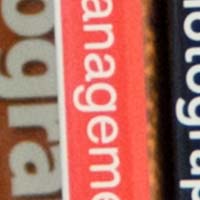 |
| ISO 800 (100% Crop) | ISO 800 (100% Crop) |
 | 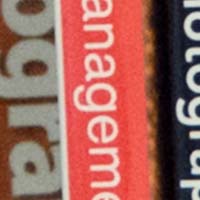 |
| ISO 1600 (100% Crop) | ISO 1600 (100% Crop) |
 | 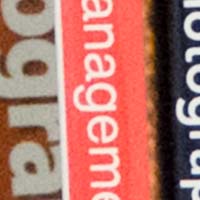 |
| ISO 3200 (100% Crop) | ISO 3200 (100% Crop) |
 | 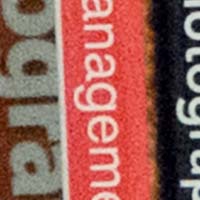 |
| ISO 6400 (100% Ingather) | |
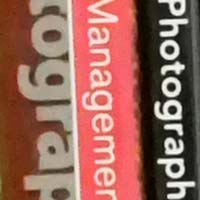 | |
| ISO 12800 (100% Crop) | |
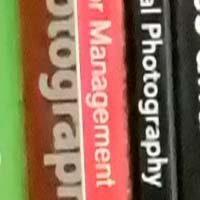 |
Focal Range
The Fujifilm XF1's 4x zoom lens provides a focal length of 25-100mm in 35mm terms, every bit demonstrated below.
| 25mm | 100mm |
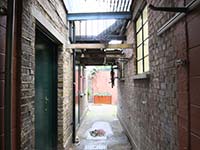 |  |
Intelligent Digital Zoom
The Intelligent Digital Zoom office tin digitally boost the optical 4x zoom up to 8x, the equivalent of a 200mm focal length. Annotation that information technology'southward non available in continuous mode, during moving-picture show recording or when shooting in RAW manner, and rather strangely the effects are not visible in the LCD display during shooting.
| 4x | 4x (100% Crop) |
 |  |
| 8x | 8x (100% Ingather) |
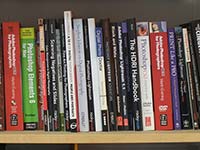 |  |
Sharpening
Here are ii 100% crops which have been Saved equally Web - Quality l in Photoshop. The right-paw prototype has had some sharpening applied in Photoshop. The out-of-the camera images are a footling bit soft at the default sharpening setting, and benefit from some further sharpening in a programme like Adobe Photoshop.
| Original (100% Crop) | Sharpened (100% Crop) |
 |  |
 |  |
File Quality
The Fujifilm XF1 has two different image quality settings available, with Fine being the highest quality selection. Here are some 100% crops which show the quality of the diverse options, with the file size shown in brackets.
Chromatic Aberrations
The Fujifilm XF1 handled chromatic aberrations very well during the review. But a little purple fringing was present around the edges of objects in high-contrast situations, equally shown in the examples beneath.
| Chromatic Aberrations 1 (100% Crop) | Chromatic Aberrations 2 (100% Crop) |
 |  |
Macro
The Fujifilm XF1 offers a Macro setting that allows you to focus on a subject that is 3cm away from the camera. The first image shows how close you lot tin can get to the subject in Macro style (in this case a compact flash carte). The second image is a 100% ingather.
| Macro Shot | 100% Crop |
 |  |
Wink
The flash settings on the Fujifilm XF1 are Car, Forced Wink, Suppressed Flash, Slow Synchro, and whatsoever of those modes combined with Scarlet-eye Reduction. These shots of a white coloured wall were taken at a altitude of 1.5m.
| Flash Off - Wide Angle (25mm) | Wink On - Broad Angle (25mm) |
 |  |
| Flash Off - Wide Bending (100mm) | Flash On - Broad Angle (100mm) |
 |  |
And hither are some portrait shots. Neither the Automobile or Red-middle reduction mode caused whatsoever amount of red-centre.
| Flash On | Flash On (100% Ingather) |
 |  |
| Crimson Eye Reduction | Red Eye Reduction (100% Crop) |
 |  |
Night
The Fujifilm XF1's maximum shutter speed is 8 seconds, which is adept news if you're seriously interested in nighttime photography. The shot beneath was taken using a shutter speed of 8 seconds at ISO 100.
| Night Shot | Night Shot (100% Crop) |
 |  |
Anti Shake
The Fujifilm XF1 has an anti-milkshake machinery, which allows you to take sharp photos at slower shutter speeds than other digital cameras. To test this, I took two handheld shots of the same subject with the same settings. The beginning shot was taken with anti milk shake turned off, the 2nd with information technology turned on. Hither are some 100% crops of the images to show the results. As you lot can see, with anti shake turned on, the images are much sharper than with anti milkshake turned off. This feature really does seem to brand a departure and could mean capturing a successful, sharp shot or missing the opportunity altogether.
| Shutter Speed / Focal Length | Anti Milk shake Off (100% Crop) | Anti Milk shake On (100% Crop) |
| 1/fifth / 25mm | 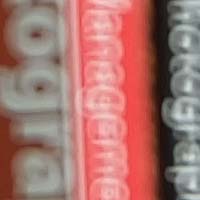 |  |
| 1/8th / 100mm |  |  |
EXR Modes
Fujifilm's EXR sensor can exist utilized in ane of iii ways by the photographer. There'south a choice between shooting at full 12 megapixel resolution in Loftier Resolution (HR) style, or a six megapixel image in the Low Noise (SN) mode for shooting without flash in low calorie-free weather, or the Dynamic Range (DR) mode to reach an optimal balance between shadows and highlights. The latter offers five strengths ranging from 100-1600%. If you lot tin can't decide which is best for a chosen scene or subject, then just leave the photographic camera on the scene-detecting EXR Automatic Fashion and permit it choose for itself.
| Resolution Priority | Resolution Priority (100% Crop) |
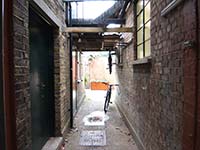 | 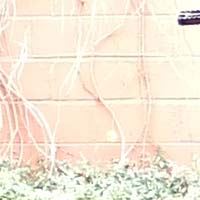 |
| High ISO & Depression Noise | Loftier ISO & Low Noise (100% Crop) |
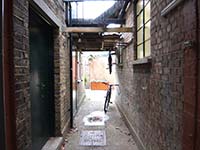 |  |
| D-Range Priority - 100% | D-Range Priority - 200% |
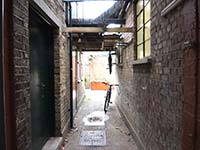 | 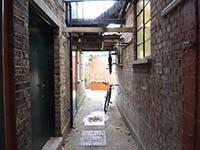 |
| D-Range Priority - 400% | D-Range Priority - 800% |
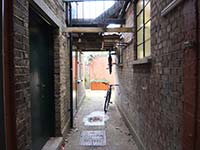 | 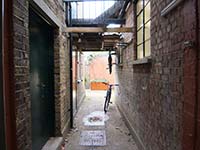 |
| D-Range Priority - 1600% | |
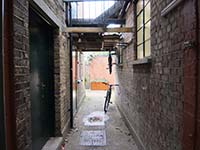 |
Pro Focus
The Fujifilm XF1's Pro Focus fashion makes it easier to achieve a blurred groundwork, perfect for portraits where compact digicams traditionally struggle, with 3 strengths of blurring on offering.
| Pro Focus ane | Pro Focus 1 (100% Ingather) |
 | 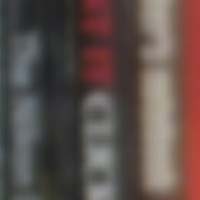 |
| Pro Focus 2 | Pro Focus 2 (100% Crop) |
 | 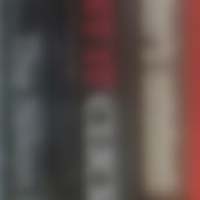 |
| Pro Focus three | Pro Focus 3 (100% Crop) |
 | 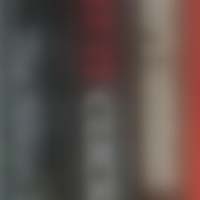 |
Pro Low-Light
The Fujifilm XF1's Pro Low-Light scene style produces improve image clarity at high ISO levels, with the camera automatically taking a series of 4 high sensitivity/depression-noise shots in quick succession which are then combined together using in-photographic camera processing into an paradigm with less noise than the single exposures. The primary drawback is a noticeable softening of fine detail.
| Pro Depression-Light Off | Pro Low-Light On |
 | 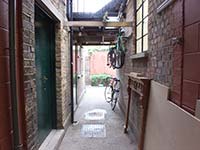 |
Multiple Exposure
In the Multiple Exposure advanced mode the Fujifilm XF1 can combine ii seperate images into one, as shown in the example below.

Motion-picture show Simulation Modes
The Fujifilm XF1 offers five different film simulation modes to help replicate the expect of your favourite picture stock from the past.
| Provia / Standard | Velvia / Vivid |
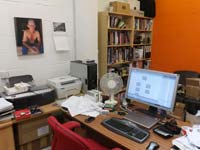 |  |
| Astia / Soft | Blackness & White |
 | 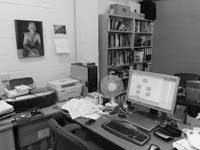 |
| Sepia | |
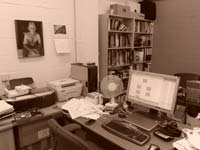 |
Advanced Filter
The Advanced Filter mode on the Fujifilm XF1 offers 6 creative special effects to assist customise the look of your images as you take them.
| Toy Camera | Miniature |
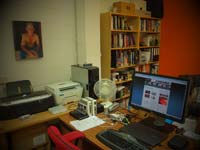 | 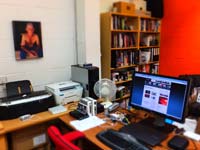 |
| Pop Colour | High-Key |
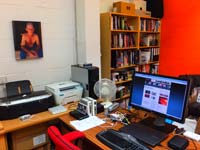 |  |
| Dynamic Tone | Function Color |
 | 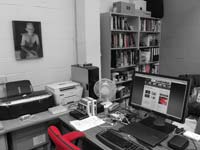 |
Panorama Mode
The Fujifilm XF1 allows you to take panoramic images very easily by 'sweeping' with the camera while keeping the shutter release depressed. The photographic camera does all the processing and stitching, and there are three views bachelor. The main problems are that the resulting paradigm is of adequately low resolution - 1080 pixels loftier and 5760 pixels wide for the 360 degree image - moving objects are recorded as "ghost" images, and different lighting sources cause obvious vertical streaks to appear.
Sample Images
This is a selection of sample images from the Fujifilm XF1 camera, which were all taken using the 12 megapixel Fine JPEG setting. The thumbnails below link to the total-sized versions, which have not been altered in whatsoever way.
Sample RAW Images
The Fujifilm XF1 enables users to capture RAW and JPEG format files. We've provided some Fujifilm RAW (RAF) samples for y'all to download (thumbnail images shown below are not 100% representative).
Sample Motion picture & Video
This is a sample moving-picture show at the quality setting of 1920x1280 at thirty frames per 2nd. Please note that this 22 second movie is 38.1Mb in size.
Product Images
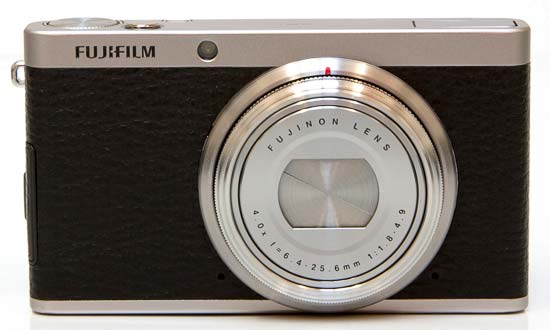 |
| Front of the Photographic camera |
 |
| Forepart of the Camera / Standby |
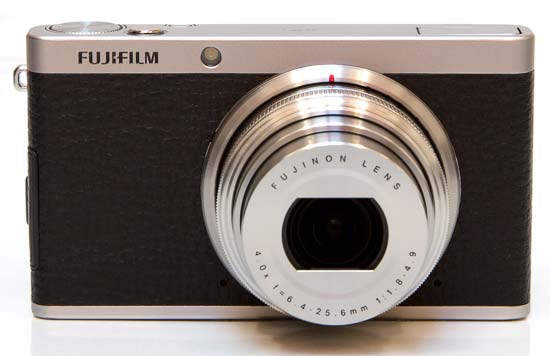 |
| Front of the Photographic camera / Lens Extended to 25mm |
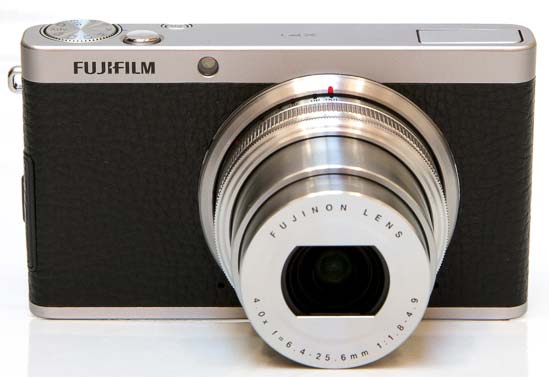 |
| Front end of the Camera / Lens Extended to 100mm |
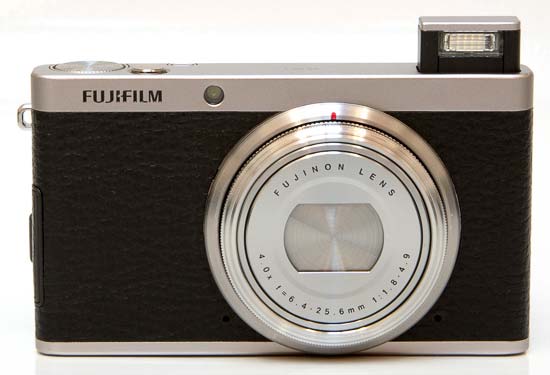 |
| Front end of the Camera / Flash Raised |
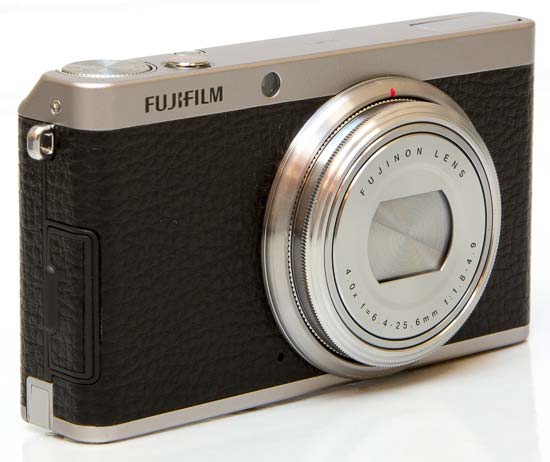 |
| Isometric View |
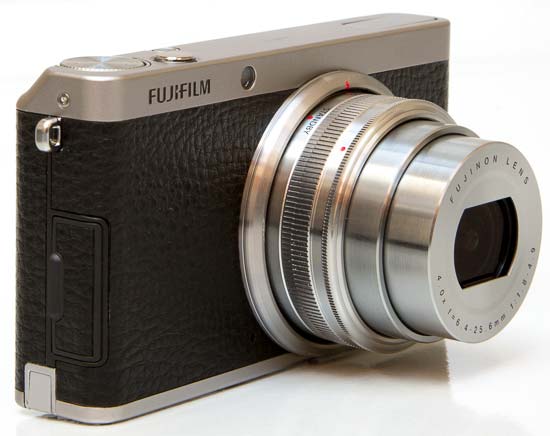 |
| Isometric View |
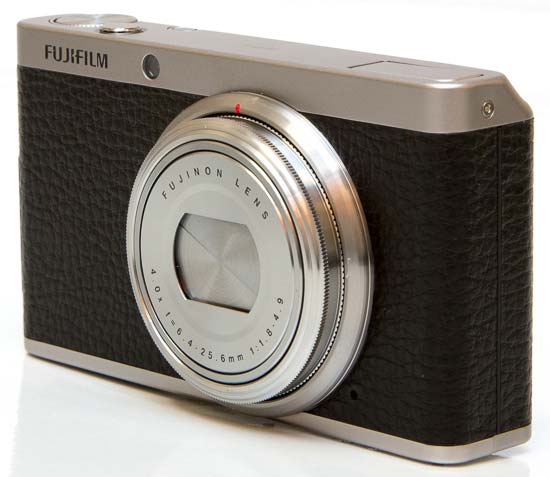 |
| Isometric View |
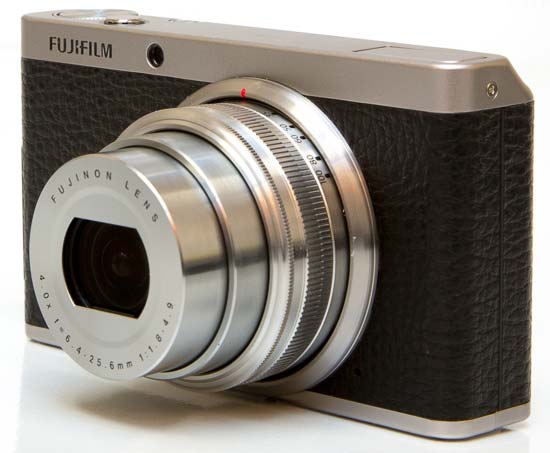 |
| Isometric View |
 |
| Rear of the Camera |
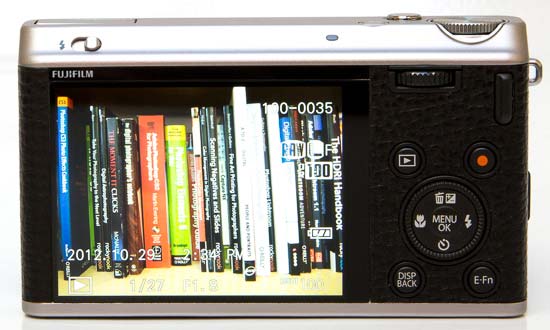 |
| Rear of the Camera / Image Displayed |
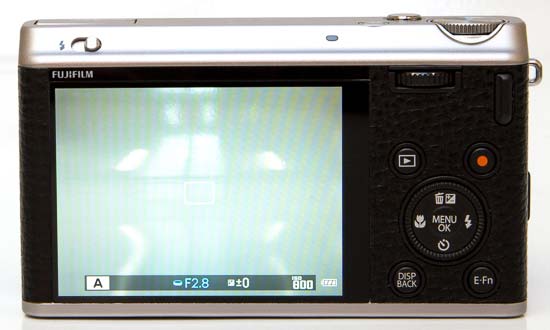 |
| Rear of the Camera / Turned On |
 |
| Rear of the Photographic camera / Main Card |
 |
| Rear of the Camera / Eastward-Fn Menu |
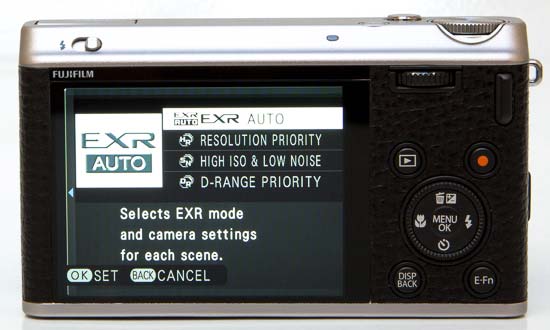 |
| Rear of the Camera / EXR Menu |
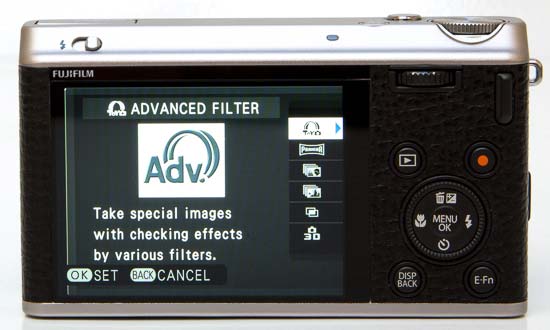 |
| Rear of the Camera / Advanced Carte |
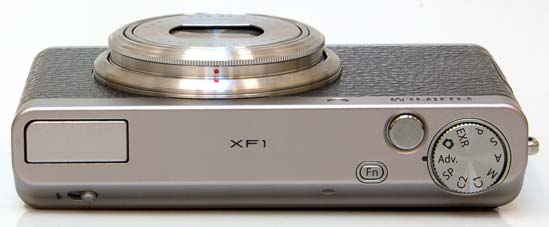 |
| Top of the Photographic camera |
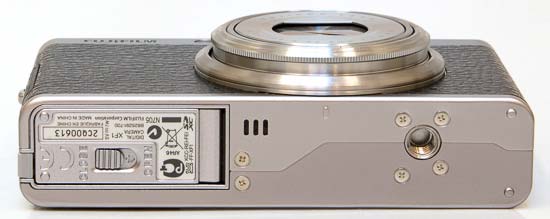 |
| Bottom of the Photographic camera |
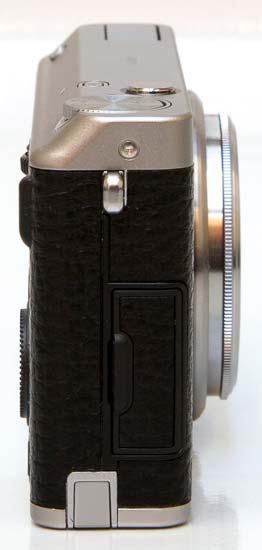 |
| Side of the Camera |
 |
| Side of the Camera |
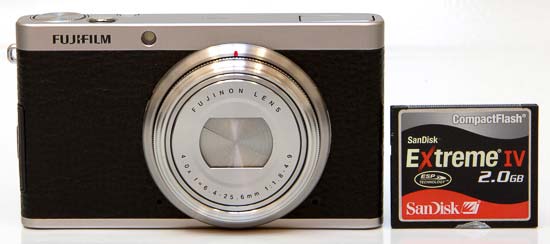 |
| Front end of the Camera |
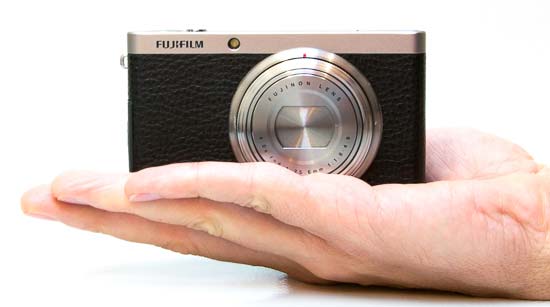 |
| Front of the Camera |
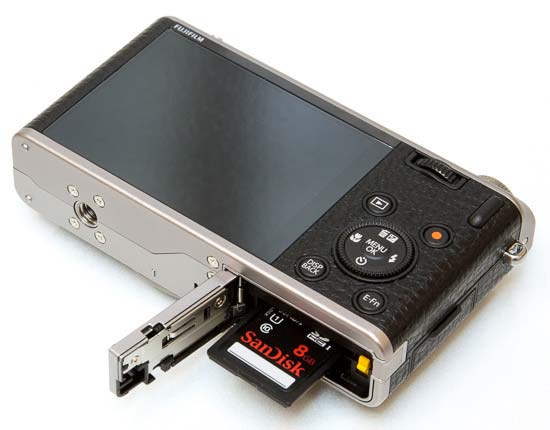 |
| Memory Bill of fare Slot |
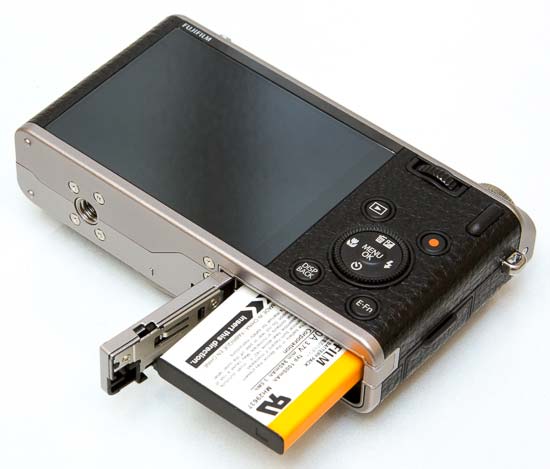 |
| Battery Compartment |
Conclusion
The Fujifilm XF1 offers a similar retro experience, solid build and excellent image quality equally its bigger X-series relatives at a cheaper price, but some of the features are less well-realised with manner often winning out over substance.
The XF1 is conspicuously an endeavour to widen the appeal of Fujifilm's X-series even further, with its clean lines and uncluttered looks resulting in a chichi, classically styled camera. Although not quite on a par with the X10 and X100, the XF1's build quality is very good, and the image quality from the large 2/3-inch CMOS sensor is markedly better than virtually all other compacts. Noise is noticeable only by its almost consummate absence from ISO 100-800, with the faster full-resolution settings of 1600 and 3200 also existence very usable. The 4x lens is commendably abrupt and distortion gratis at both ends of its focal range, while the f/one.8 maximum discontinuity at 25mm makes it easier than nearly compacts to creatively throw the background out of focus (although information technology does quickly slow to f/4.9 at total telephoto).
Things aren't quite so rosy on the handling front, though. While nosotros dear the new E-Fn menu system, which effectively makes upwards for the XF1's reduced number of external controls, the same can't exist said for the innovative just ultimately obtrusive lens band. The ability to manually zoom through the focal range is very welcome, but we'd much prefer a unproblematic on/off button to the frankly convoluted way of turning the camera, with the Standby fashion feeling redundant. The XF1 comes with several prominent guides explaining how to turn information technology on - that'due south several guides also many in our book. The manual zooming ring besides made us miss having an optical viewfinder, every bit information technology practically begs you to agree the photographic camera up to your eye.
And then whereas the Fujifilm X10 got the combination of retro fashion and a lensman-friendly approach largely correct, the new XF1 feels a bit less well-realised. Not to say that information technology'southward a bad camera - and it is likewise the cheapest Ten-series model in the now all-encompassing range - merely overall the Fujifilm XF1 doesn't have quite the same appeal equally the rest of the range...
| Ratings (out of 5) | |
|---|---|
| Blueprint | iv |
| Features | iv |
| Ease-of-utilize | 4 |
| Prototype quality | four.five |
| Value for coin | 4 |
Review Roundup
Reviews of the Fujifilm XF1 from around the web.
The Fuji XF1 is a premium digital camera in a meaty body which houses the earth's smallest mechnical zoom paired with Fuji's unique 12 megapixels EXR-CMOS sensor. Packed with features including total transmission controls, manual focus and custom white-rest, the XF1 makes these more than accessible than any compact camera with dual control-dials and an traditional exposure mode-dial.
Read the full review »
Specifications
| Model | XF1 |
|---|---|
| Effective Pixels | 12.0 million pixels |
| Sensor type | two/three-inch EXR CMOS with primary colour filter |
| Storage media |
|
| File format |
|
| Number of recorded pixels |
|
| |
| Digital zoom | Intelligent digital zoom approx. 2x (upwardly to 8 x when combined with optical zoom) |
| Aperture | F1.8-F11(Broad) F4.ix-F11(Telephoto) one/3EV stride (controlled 6-blade discontinuity diaphragm) |
| Focus distance (from lens surface) |
|
| Sensitivity | Auto / Equivalent to ISO 100 / 200 / 250 / 320 / 400 / 500 / 640 / 800 / m / 1250 / 1600 / 2000 / 2500 / 3200 / 4000* / 5000* / 6400* / 12800* (Standard Output Sensitivity)
|
| Exposure control | TTL 256-zones metering, Multi / Spot / Average |
| Exposure style | Programmed AE, Aperture Priority AE, Shutter Priority AE, Manual |
| Shooting modes |
|
| Epitome stabilisation | Lens shift type |
| Exposure compensation | -two.0EV - +2.0EV 1/3EV step |
| Shutter speed | (Automobile mode) 1/iv sec. to 1/2000* sec., (All other modes) 8 sec. to 1/2000* sec. * one/2000 sec. at small aperture, 1/1000 sec. at full aperture |
| Continuous shooting |
|
| Motorcar bracketing | AE Bracketing : ±1/3EV, ±two/3EV, ±1EV Picture Simulation Bracketing : PROVIA / STANDARD, Velvia / Brilliant, ASTIA / SOFT Dynamic Range Bracketing : 100%, 200%, 400% ISO Sensitivity Bracketing : ±1/3EV, ±ii/3EV, ±1EV |
| Focus |
|
| White balance | Automatic scene recognition Preset : Fine, Shade, Fluorescent light (Daylight), Fluorescent lite (Warm White), Fluorescent low-cal (Cool White), Incandescent low-cal, Underwater, Custom, Colour temperature selection |
| Self timer | ten sec. / ii sec. delay |
| Wink | Car wink (super intelligent flash) Effective range : (ISO Automobile (800)) Broad : Approx. l cm - seven.4 m / 1.6 ft. - 24.two ft. Telephoto : Approx. 80 cm - 2.7 g / 2.half dozen ft. - viii.eight ft. |
| Wink modes | Red-eye removal OFF : Auto, Forced Flash, Suppressed Wink, Dull Synchro. Red-eye removal ON : Ruby-eye Reduction Car, Red-heart Reduction & Forced Wink, Suppressed Flash, Red-centre Reduction & Ho-hum Synchro. |
| Hot shoe | - |
| Movie recording | 1920 x 1080 pixels / 1280 x 720 pixels / 640 x 480 pixels (xxx frames / sec.) with stereo sound Optical zoom (manual) tin can exist used. |
| Photography functions | EXR manner (EXR Automobile / Resolution priority / Loftier ISO & Depression noise priority / Dynamic range priority), Face up recognition, Face Detection, Auto cherry-center removal, Moving-picture show simulation, Framing guideline, Frame No. retentivity, Histogram brandish, Best frame capture, Advanced way (Advanced filter, Motion panorama360, Pro focus, Pro depression light, Multiple exposure, Private shutter 3D), High Speed Motion-picture show (70 / 120 / 200 frames/sec.), Electronic level, Advanced Anti Mistiness, Recording movie in the EXR Motorcar mode?Automatic Scene Choice. (Auto,Macro,Mural,Nighttime,Portrait,Portrait+Dark,Backlight Portrait), E-fn (extended function) BUTTON CUSTOM SETTING |
| Playback functions | Face Detection, Auto ruddy-eye removal, Multi-frame playback (with micro thumbnail), Protect, Crop, Resize, Slide show, Image rotate, Vocalization memo, Histogram display, Exposure warning, Photobook assistance, Paradigm search, Favorites, Marking for upload, Panorama, Erase selected frames, RAW conversing |
| Other functions | PictBridge, Exif Print, 35 Languages, Time difference, Silent mode |
| Terminal |
|
| Ability supply | NP-50A Li-ion bombardment (included) / CP-50 with AC power adapter Air conditioning-5VX (sold separately) |
| Dimensions | 107.9(West) ten 61.5(H) x 33.0(D) mm / 4.2(W) 10 two.four(H) x 1.2(D) in. |
| Weight | Approx. 225 thou / 7.nine oz. (including battery and memory carte du jour) Approx. 204 m / 7.1 oz. (excluding battery and memory card) |
| Operating temperature | 0°C - 40°C |
| Operating humidity | ten% - fourscore% (no condensation) |
| Bombardment life | approx. 300 frames CIPA standard |
| Accessories included | Li-ion battery NP-50A Bombardment charger BC-50B Hand strap Lens cap USB cable CD-ROM Owner's manual |
| Optional accessories | Li-ion battery NP-50 Battery charger BC-45W A / Five cable AV-C1 Soft case SC-XF DC coupler CP-fifty AC power adapter Air conditioning-5VX |
|
Your Comments
- Introduction
- Ease of Use
- Image Quality
- Sample Images
- Product Images
- Conclusion
- Review Roundup
- Specifications
Source: https://www.photographyblog.com/reviews/fujifilm_xf1_review
Posted by: fergusonwitiou.blogspot.com

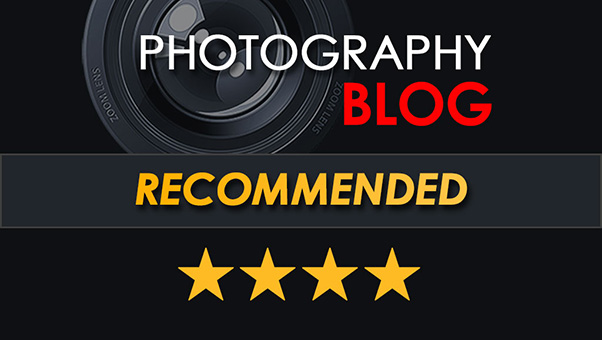
0 Response to "Best Settings For Fuji Xf1 Camera?"
Post a Comment